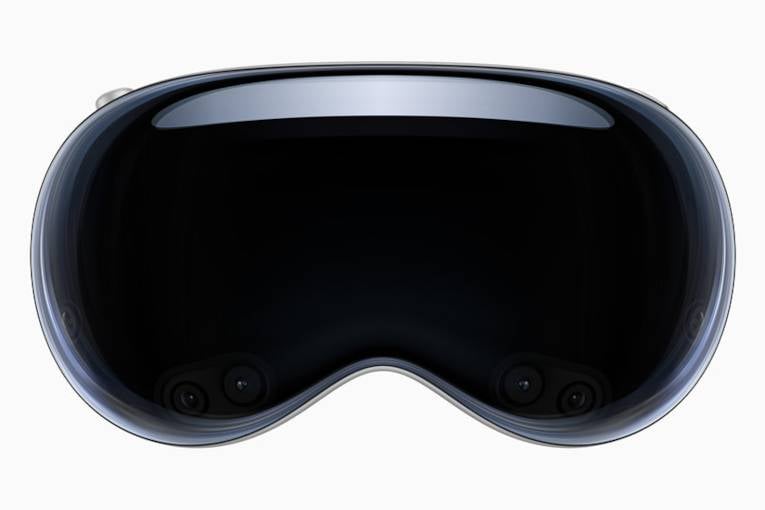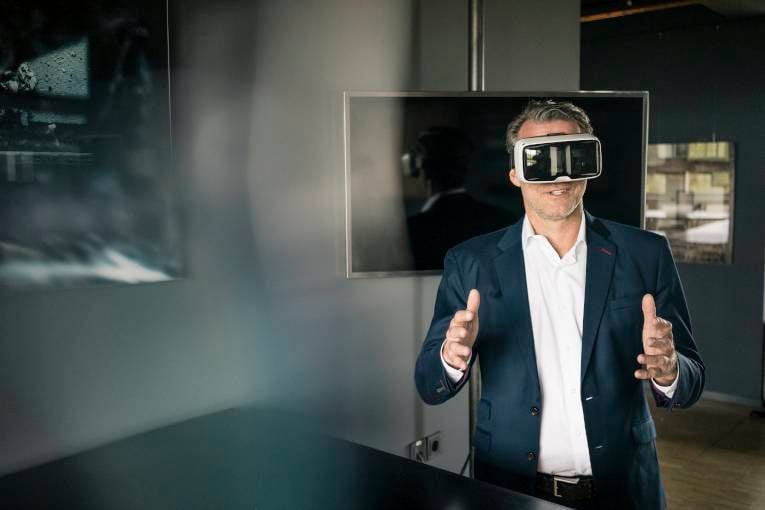
On 5th June 2023, Apple announced the release of its Vision Pro device, an augmented reality headset, its first major hardware release in a decade. In 2001, Apple released the iPod. It wasn’t the first MP3 player but the combination of the iTunes free music management software, the innovative wheel and button control saw a whole new product class not simply appear but destroy CD sales. To understand the impact, CD sales peaked in 2002 where they had sold over 650,000,000 but fast forward to 2017 as the adoption of digital downloads increased in popularity, CD sales plummeted to (around 160,000,000).
And what about the iPhone? Apple looked at the smartphones at the time and realised that a physical keyboard was simply wrong and, from there, turned smartphone design on its head. Nokia and Blackberry both fell victim to this change. It’s worth noting that Apple had never made a phone before, yet within 4 years, it became the largest manufacturer of smartphones. So, does Apple’s new Vision Pro device mean that a new consumer electronics category is about to take off? And how will this change consumer behaviour?

Source: Weforum
Does this mean Zuckerberg’s Metaverse will be a reality?
The myriad of virtual worlds that is the Metaverse currently relies on Virtual Reality headsets. These are headsets that project images into opaque goggles. Apple’s Vision Pro is an augmented reality headset allowing users to see through the goggles as well as have information / data projected into the viewer’s vision. This is a huge fundamental difference, although it is likely that you could also use Apple’s device for virtual reality. Meta’s current range of headsets do not have the capability to work in augmented reality worlds.
The important difference is that Apple obviously thinks that the future is seeing an enhanced real world, not simply existing in a virtual world. Unlike Google’s Glass product that never became a production reality, Apple’s device is far from subtle to wear down the street.
How will people use Apple’s Vision Pro?
With a price tag of $3,499 (£2,849), the Vision Pro is not a mass market product. Cheaper versions are likely to follow but even if the cost drops by 50%, it is still significantly more expensive than Meta’s Quest headset at $449 (£351). But as with the iPod and iPhone, Apple setting a benchmark is going to see others bring out cheap copycat products which will increase the consumer uptake.
Journalists reporting on the demos since launch have talked about a variety of Apps that Apple have already got available that run on the headset. From looking at your photos on a massive virtual screen in your living room to watching 3D movies, there are the obvious entertainment applications. The Apple device uses gesture controls rather than the rather clunky handheld controllers that are typical with other headsets. Just as with the iPod’s jog-wheel, the ease of use makes the technology something that anyone can embrace. Apple are obviously hoping that developers will be rolling out lots of apps to work on the Vision Pro but the question is will the gesture control be a help or a hinderance on some of these apps?
It will be the adoption of these yet-to-be-created Apps that will ultimately define whether the Vision Pro has a similar seismic shift in technology adoption as the iPod and iPhone. Remember, Apple has created products that have failed to get traction such as the Apple Newton. Apple’s own predictions for the first-year sales of the Vision Pro is 900,000 units. That might seem like a lot but they sold 225 million iPhones in 2022 for context.

Source: Apple
Power of AI behind the applications
As we have recently discussed in our latest blog, How AI is changing marketing in 2023, AI technologies are transforming the way businesses operate day to day, how we interact with our customers and deliver a personalised experience. However, sometimes it can be used so subtly that the customer doesn’t even realise it’s through the use of AI. So, with all this in mind, how much AI is behind the new Vision Pro device?
Since the latest release of the Vision Pro Headset, Apple has claimed that the device uses spatial computing, combining AR and VR technologies, and with the power of AI and machine learning, they are able to create and build on features that revolutionise our interaction with technology.
How will it impact digital marketing?
You want to talk to your consumers at the right time, in the right place and with the right message. We think that it will fuel more people going into virtual and augmented reality worlds. Total consumer take up is predicted to be low in the first year, but is that going to be the start of a very big wave? Will Apple’s entry into the space make many more consumers buy a device even if it’s not an Apple one? As reported by Forbes, Sales of VR headsets actually fell by 12% in 2022 which was a big blow to Meta’s business valuation as investors lost faith in people engaging with this technology.
You could see applications for these headsets to be used in store to create a more immersive shopping experience. Imagine sitting in a car and specifying different interior trims and then seeing the car interior change in front of your eyes. Or furniture stores allowing you to visualise the same sofa in a range of colours.
For the home consumer that can afford to buy a headset, they could experience a new type of online shopping where they can stand in front of the mirror at home and try on various outfits. Combine it with other technology and you could have the ability for consumers to customise products on the fly seeing the result of their prompts. Yes, AI prompts to drive what you see and all through the convenience of just telling Siri. This type of shopping obviously has benefits for the consumer which would drive increased sales but, from the retailer’s perspective, this technology should reduce returns and could even open up new lines by allowing rapid customisation with consumer approval.
The development of such a shopping experience is going to be costly and, unlike the early days of the Internet where it gave small businesses the opportunity to compete with larger businesses on a more equal footing, tech cost implementation could lead to more market consolidation.
What about B2B?
It’s easy to see how this new technology could revolutionise B2C businesses but what about B2B? We’ve thought of a few ideas but feel free to send us yours!
Imagine virtual demos to immerse your prospects and help them understand the features, functionalities and benefits of your product or service. Using virtual worlds could also revolutionise how you conduct business. Think about the possibilities with virtual conferences, trade shows, or training sessions. Through VR, you can bring people from all around the globe together without the high costs of travel and physical set-up. There are already a few conferences that have gone virtual following the pandemic, but VR headsets could make these even more immersive and accessible.
AR and VR also open the door to remote assistance and support where you could guide customers by overlaying relevant information onto the real world providing better customer service, faster issue resolution, and reduced downtime – this works for both B2B and B2C.

Should you adapt your approach or strategy?
For consumer-focused brands, you should already be considering the metaverse and whether there are opportunities for you to engage with your consumers in new and innovative ways. Your digital marketing budget should always have an element allocated to experimentation and innovation. Exploring the metaverse / VR opportunities early can give you a competitive advantage that could be sustainable and considerable in the long run.
Experimental work in these areas will also give you a sense for whether you should be looking to put deeper investment into areas that exploit these new technologies more extensively. For example, building an ecommerce platform that can utilise the technology within these headsets is going to be a costly endeavour and you want to make sure that your investment is going to be repaid by consumers adopting what you provide.
Expertise to maximise the adoption and benefits of new technologies
To discover how to truly embrace the potential of an ever-evolving technology within your marketing and sales, book a free consultancy call with our team. We can answer your immediate questions and discuss further opportunities where your business can gain a competitive advantage.

.png?width=250&height=141&name=image-gen%20(1).png)








